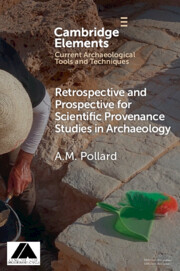Refine search
Actions for selected content:
125 results
Integrated geochemical and thermobarometric approach to ascertain provenance and pressure–temperature conditions from detrital Himalayan garnets (Siwalik Group, Surai Khola, Nepal)
-
- Journal:
- Geological Magazine / Volume 162 / 2025
- Published online by Cambridge University Press:
- 18 August 2025, e24
-
- Article
-
- You have access
- Open access
- HTML
- Export citation
Climatic and tectonic influences as recorded in the mineralogy of a Miocene clay deposit at Şile, Türkiye
-
- Journal:
- Clay Minerals , FirstView
- Published online by Cambridge University Press:
- 18 July 2025, pp. 1-10
-
- Article
-
- You have access
- Open access
- HTML
- Export citation
Great leaps from unstable ground: A response to “Making a market for ‘The Art of Nepal’: Tracing the flow of Nepali cultural property into the United States”
-
- Journal:
- International Journal of Cultural Property / Volume 32 / Issue 2 / May 2025
- Published online by Cambridge University Press:
- 17 July 2025, pp. 194-203
-
- Article
- Export citation
Metallurgy in first-millennium BC Poland: insights from metal production, trade networks and landscape archaeology
-
- Journal:
- Antiquity , First View
- Published online by Cambridge University Press:
- 24 June 2025, pp. 1-10
-
- Article
-
- You have access
- Open access
- HTML
- Export citation
Amber Networks in Prehistory: North-Eastern Iberia as a Case Study
-
- Journal:
- European Journal of Archaeology , First View
- Published online by Cambridge University Press:
- 02 June 2025, pp. 1-18
-
- Article
-
- You have access
- Open access
- HTML
- Export citation
Constructing Provenance with Old Collections: The Case of Cumberland Clark
-
- Journal:
- International Journal of Cultural Property / Volume 31 / Issue 3 / August 2024
- Published online by Cambridge University Press:
- 28 March 2025, pp. 338-359
-
- Article
-
- You have access
- Open access
- HTML
- Export citation
The first pottery in the Arabian Gulf: origins, production and distribution
-
- Article
-
- You have access
- Open access
- HTML
- Export citation

Retrospective and Prospective for Scientific Provenance Studies in Archaeology
-
- Published online:
- 06 February 2025
- Print publication:
- 06 February 2025
-
- Element
- Export citation
The Late Bronze Age harbour of Pefkakia: evidence from transport containers suggests site's role
-
- Article
-
- You have access
- Open access
- HTML
- Export citation
A revised chemical weathering and sediment provenance history for the Late Miocene to recent Laxmi Basin, Arabian Sea
-
- Journal:
- Geological Magazine / Volume 161 / 2024
- Published online by Cambridge University Press:
- 11 December 2024, e20
-
- Article
-
- You have access
- Open access
- HTML
- Export citation
Making a market for “The Art of Nepal”: Tracing the flow of Nepali cultural property into the United States
-
- Journal:
- International Journal of Cultural Property / Volume 31 / Issue 1 / February 2024
- Published online by Cambridge University Press:
- 07 November 2024, pp. 79-101
-
- Article
- Export citation
Climatic significance of clay minerals in Cenozoic marine and lacustrine sediments
-
- Journal:
- Clay Minerals / Volume 59 / Issue 3 / September 2024
- Published online by Cambridge University Press:
- 18 September 2024, pp. 228-257
-
- Article
- Export citation
Mineralogy, O18/O16, and D/H Ratios of Clay-Rich Sediments from Deep Sea Drilling Project Site 180, Aleutian Trench
-
- Journal:
- Clays and Clay Minerals / Volume 29 / Issue 4 / August 1981
- Published online by Cambridge University Press:
- 01 July 2024, pp. 309-315
-
- Article
- Export citation
Chlorite and Mica as Indicators of Provenance
-
- Journal:
- Clays and Clay Minerals / Volume 28 / Issue 3 / June 1980
- Published online by Cambridge University Press:
- 01 July 2024, pp. 230-232
-
- Article
- Export citation
Geochemistry of lake sediments from the South Shetland Islands and James Ross Archipelago, north Antarctic Peninsula
-
- Journal:
- Antarctic Science / Volume 36 / Issue 3 / June 2024
- Published online by Cambridge University Press:
- 30 May 2024, pp. 160-180
-
- Article
- Export citation
Clay Mineralogy and Illite Crystallinity of the Atoka Formation, Arkoma Basin, and Frontal Ouachita Mountains
-
- Journal:
- Clays and Clay Minerals / Volume 41 / Issue 6 / December 1993
- Published online by Cambridge University Press:
- 28 February 2024, pp. 745-754
-
- Article
- Export citation
K-Ar Age Constraints on the Origin Of Micaceous Minerals in Savannah River Site Soils, South Carolina, USA
-
- Journal:
- Clays and Clay Minerals / Volume 60 / Issue 5 / October 2012
- Published online by Cambridge University Press:
- 01 January 2024, pp. 496-506
-
- Article
- Export citation
Provenance of the early Palaeozoic volcano-sedimentary successions from eastern part of the Central Sudetes: implications for the tectonic evolution of the NE Bohemian Massif
-
- Journal:
- Geological Magazine / Volume 160 / Issue 8 / August 2023
- Published online by Cambridge University Press:
- 02 October 2023, pp. 1498-1534
-
- Article
- Export citation
Provenance of a Late Permian retroarc foreland basin along the eastern Gondwanan margin: northern Sydney Basin, eastern Australia
-
- Journal:
- Geological Magazine / Volume 160 / Issue 8 / August 2023
- Published online by Cambridge University Press:
- 26 September 2023, pp. 1535-1555
-
- Article
-
- You have access
- Open access
- HTML
- Export citation
Chapter 2 - Scholarly Evaluations of Proverbs
-
- Book:
- The Theology of the Book of Proverbs
- Published online:
- 10 January 2024
- Print publication:
- 31 August 2023, pp 29-56
-
- Chapter
- Export citation
